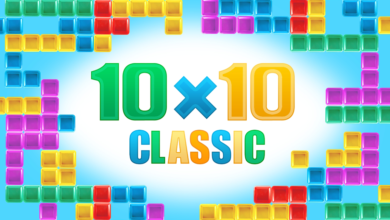Unleashing Nostalgia: The Ultimate Guide to Pac-Man

Introduction
In the realm of video games, few titles hold as much historical significance and cultural impact as Pac-Man. Created by Japanese game designer Toru Iwatani and released by Namco in 1980, Pac-Man quickly became a global phenomenon, captivating audiences with its simple yet addictive gameplay and iconic characters. From its humble beginnings in the arcades to its enduring legacy in modern gaming culture, Pac-Man has left an indelible mark on the world of entertainment. In this comprehensive guide, we’ll delve deep into the maze of Pac-Man’s history, gameplay mechanics, cultural influence, and everything in between.
Origins of Pac-Man
Pac-Man’s journey began in the early 1980s amidst the golden age of arcade gaming. Inspired by a pizza with a slice missing, Toru Iwatani set out to create a game that would appeal to a broader audience beyond the typical male demographic. The result was Pac-Man, a game centered around a hungry yellow protagonist navigating a maze filled with pellets and ghosts. Its vibrant graphics, catchy music, and innovative gameplay mechanics set it apart from other games of its time, catapulting it to unprecedented success.
Gameplay Mechanics
At its core, Pac-Man is a game of strategy and reflexes. Players control the titular character as he navigates a maze, devouring pellets while avoiding the colorful ghosts that roam the corridors. Eating power pellets temporarily grants Pac-Man the ability to turn the tables on his spectral adversaries, allowing him to chase them down for extra points. With each level, the stakes increase as the ghosts become faster and more aggressive, challenging players to think quickly and adapt to ever-changing conditions.
Pac-Man Characters
Central to Pac-Man’s appeal are its charming characters, each with their own distinct personalities and behaviors. Pac-Man himself is the lovable hero, perpetually hungry and always on the lookout for his next meal. The ghosts—Blinky, Pinky, Inky, and Clyde—serve as Pac-Man’s primary antagonists, each employing unique strategies to thwart his progress. Blinky is the relentless pursuer, Pinky uses ambush tactics, Inky is unpredictable, and Clyde exhibits a more erratic pattern of movement. Understanding their behaviors is key to mastering the game.
Ghost AI and Behavior
One of Pac-Man’s most innovative features is its dynamic AI, which governs the behavior of the ghosts. Unlike static enemies in other games, the ghosts in Pac-Man exhibit complex patterns of movement, reacting to the player’s actions in real-time. Blinky, for example, will actively chase Pac-Man, while Pinky aims to position herself ahead of his path. Inky’s behavior is influenced by both Pac-Man’s position and the position of Blinky, adding an extra layer of complexity to the game. Understanding these patterns is essential for devising effective strategies.
Power-ups and Bonus Items
In addition to pellets and ghosts, Pac-Man’s maze is scattered with power-ups and bonus items that can aid or hinder the player’s progress. Power pellets, marked by larger dots, temporarily transform the ghosts into vulnerable blue creatures, allowing Pac-Man to devour them for extra points. Fruit, appearing periodically in the center of the maze, serves as a valuable bonus item, rewarding players with additional points when consumed. Strategic use of power-ups and bonus items can significantly impact gameplay and contribute to higher scores.
Different Versions and Ports
Since its original release, Pac-Man has been ported to virtually every gaming platform imaginable, from home consoles to mobile devices. Each version retains the core gameplay mechanics of the original while introducing new features and enhancements tailored to the platform’s capabilities. The arcade version remains the most iconic, with its distinctive cabinet artwork and joystick controls evoking a sense of nostalgia for generations of players. However, modern adaptations offer enhanced graphics, multiplayer modes, and additional content, ensuring Pac-Man’s relevance in the digital age.
Pac-Man in Popular Culture
Beyond the realm of gaming, Pac-Man has permeated popular culture in ways few other franchises have. Its influence can be seen in movies, TV shows, music, fashion, and even food. The iconic yellow character has become a symbol of retro gaming, appearing on everything from t-shirts to lunchboxes. References to Pac-Man abound in mainstream media, with characters and themes frequently cropping up in sitcoms, cartoons, and advertising campaigns. Its enduring popularity is a testament to its universal appeal and timeless charm.
Competitive Pac-Man
While Pac-Man is primarily known as a single-player experience, it has also spawned a vibrant competitive scene. From high-score competitions to world championships, players around the globe compete for glory and bragging rights in the world of Pac-Man. Speedrunning—a practice wherein players attempt to complete the game in the shortest time possible—has become particularly popular, with dedicated communities sharing strategies and techniques to optimize their runs. Competitive Pac-Man serves as a testament to the game’s enduring appeal and competitive spirit.
Pac-Man Collecting and Memorabilia
For dedicated fans, collecting Pac-Man memorabilia is a passion unto itself. From vintage arcade cabinets to rare merchandise and collectibles, there is no shortage of treasures to be found in the world of Pac-Man collecting. Original arcade cabinets are highly sought after by enthusiasts, with restored machines commanding premium prices on the collector’s market. In addition to physical items, digital collectibles such as rare in-game items and virtual memorabilia have also gained popularity in recent years. For collectors, building a Pac-Man collection is not just a hobby—it’s a way to preserve gaming history for future generations.
Legacy and Impact
Few games can claim to have had as profound an impact on gaming culture as Pac-Man. Its simple yet addictive gameplay, iconic characters, and timeless appeal have solidified its place in the annals of gaming history. Pac-Man’s influence can be felt in virtually every facet of modern gaming, from maze-based mechanics to character design and storytelling. Its legacy extends beyond the realm of gaming, inspiring artists, musicians, filmmakers, and creatives of all kinds. As we celebrate Pac-Man’s legacy, we also look forward to the future, where its influence will continue to shape the world of entertainment for generations to come.
Pac-Man World Records
Pac-Man has a rich history of record-breaking achievements, with players around the world pushing the limits of skill and endurance. From marathon gaming sessions to high-score competitions, there is no shortage of feats to be celebrated in the world of Pac-Man world records. Some players have achieved astronomical scores, completing every level of the game with perfect precision. Others have pushed the boundaries of human endurance, playing for days on end without rest. These records stand as a testament to the dedication and skill of Pac-Man players everywhere, inspiring new generations of gamers to reach for the stars.
Pac-Man Easter Eggs and Secrets
Over the years, Pac-Man has accumulated a wealth of hidden treasures and Easter eggs, waiting to be discovered by intrepid players. From secret passages to hidden messages, there is no shortage of surprises lurking within the maze. Some of these secrets are purely cosmetic, offering amusing anecdotes or nods to pop culture. Others provide valuable insights into the game’s development process, revealing hidden features and unused content. Uncovering these hidden gems is a rite of passage for Pac-Man enthusiasts, adding an extra layer of excitement to the gameplay experience.




